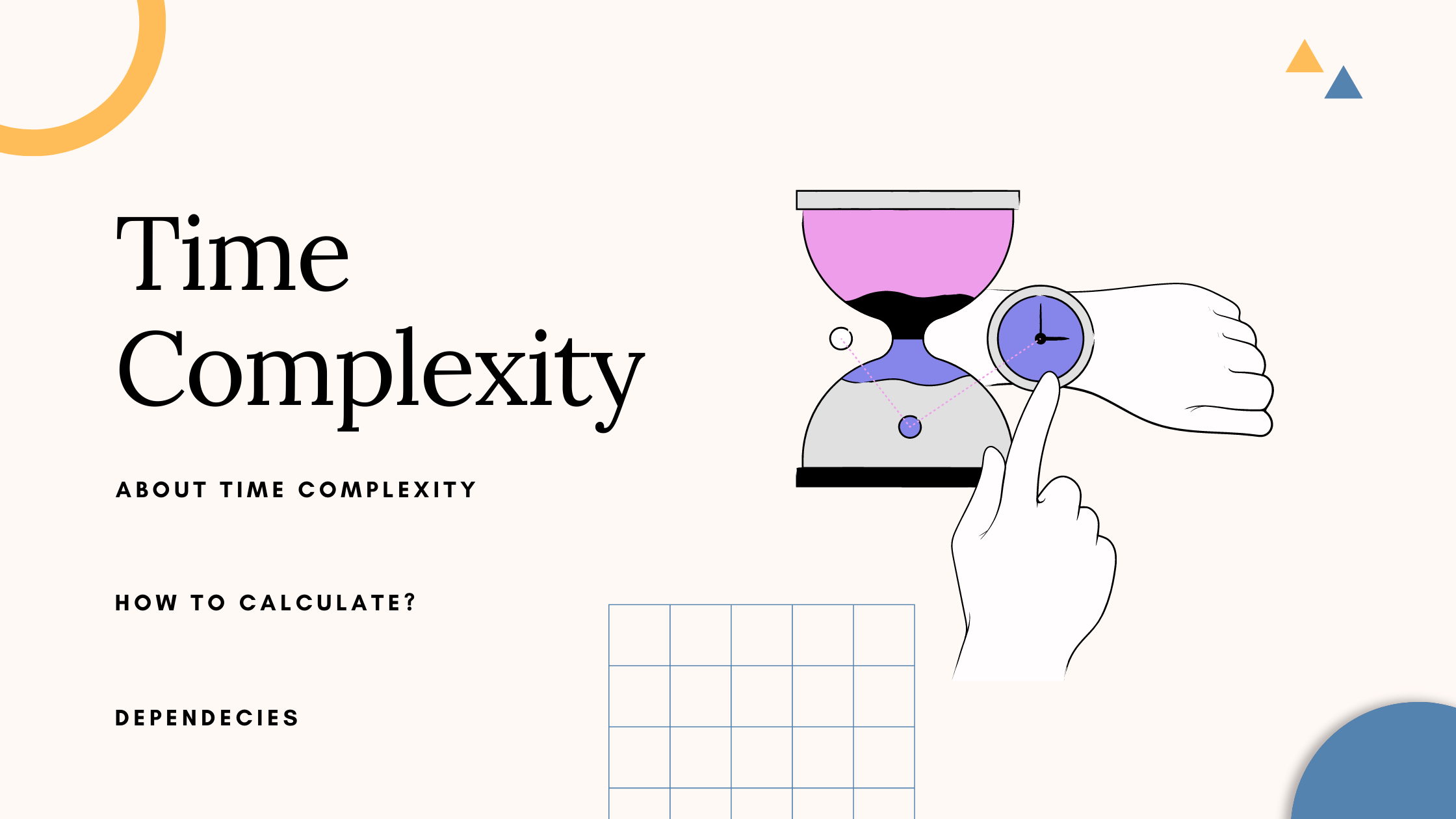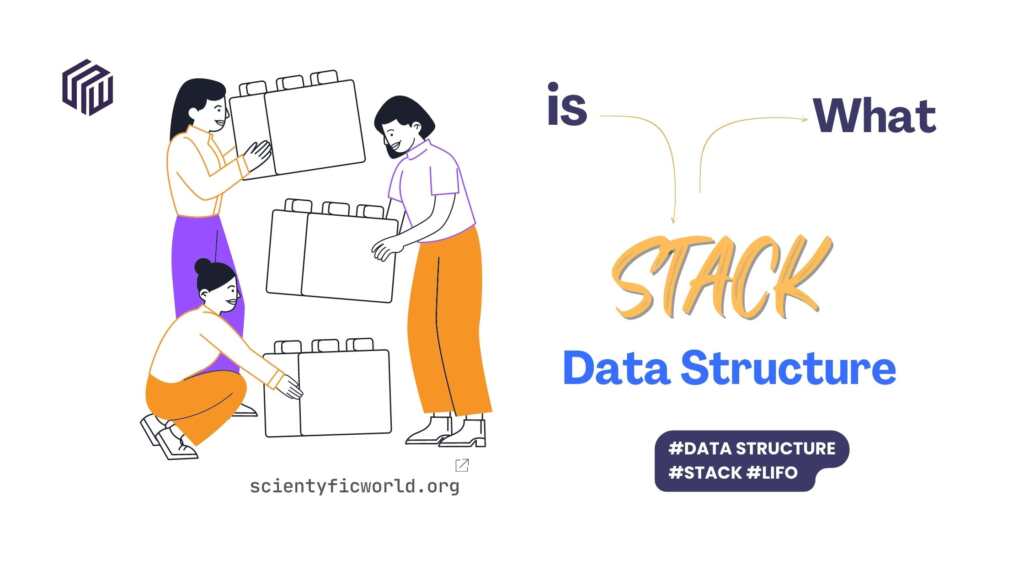Follow Us:
Which things Time Complexity depends on?

Whenever we try to implement any algorithm or any operation, we need to focus on two things primarily. One is the Time complexity of the algorithm, and the second one is the space complexity. Both space and time complexity depends on a few things. Space complexity was a huge problem in the beginning because of the cost of storage devices. Although now it is not an issue. Now, programmers think only about the “Time complexity” of a program or algorithm.
Time complexity is a measure of the amount of time it takes for an algorithm to run. It is typically expressed as a function of the input size. The time complexity of an algorithm is the number of operations that the algorithm performs as a function of the input size. The time complexity of an algorithm is the number of steps that the algorithm takes as a function of the input size.
How to calculate the time complexity?
It is important to be able to calculate the runtime complexity of an algorithm as this allows you to understand how efficient the algorithm is.
There are two common ways to measure the time complexity of an algorithm: big-O notation and Omega notation.
Big-O notation is a measure of the worst-case time complexity. In other words, it is the upper bound of the amount of time it takes for an algorithm to run. Omega notation is a measure of the best-case time complexity. In other words, it is the lower bound on the amount of time it takes for an algorithm to run.
The complexity of an algorithm is typically a function of the input size. In other words, the time it takes to run the algorithm increases as the input size increases. For example, if the input size is n, then the number of operations that the algorithm can perform is usually a function of n. The most common complexity functions are O(1), O(log n), O(n), O(n log n), O(n^2), and O(2^n).
However, this is not always the case. There are some algorithms that have a constant time complexity, meaning the amount of time it takes to run the algorithm does not change as the input size increases.
There are four main operations that are used to measure the time complexity of an algorithm: addition, multiplication, division, and comparison.
- The addition is the simplest of these operations. The complexity of an algorithm that uses addition is typically a linear function of the input size. In other words, the amount of time it takes to run the algorithm increases linearly as the input size increases.
- Multiplication is more complex than addition. The complexity of an algorithm that uses multiplication is typically a polynomial function of the input size. In other words, the amount of time it takes to run the algorithm increases as the input size increases.
- The division is more complex than multiplication. The complexity of an algorithm that uses division is typically a polynomial function of the input size. In other words, the amount of time it takes to run the algorithm increases as the input size increases.
- Comparison is the most complex of the four operations. The complexity of an algorithm that uses comparison is typically an exponential function of the input size. In other words, the amount of time it takes to run the algorithm increases exponentially as the input size increases.
Time complexity depends on:
The time complexity of an algorithm is the amount of time it takes to run, relative to the size of the input. The runtime of an algorithm can be affected by a number of things, including the choice of data structures, the order in which operations are performed, and the number of operations performed.
Here are a few things that time complexity depends on:
1. The input size:
The input size is simply the total number of items present in the input. And the runtime of an algorithm is the number of steps that the algorithm takes as a function of the input size. So, it clearly depends on the input size of a program. The larger the input size will be, the number of operations taken by the algorithm will increase. And so it will take a much longer time to run the program.
2. The number of operations performed:
The time complexity of an algorithm can also be affected by the number of operations it performs. For example, consider an algorithm that sorts a list of numbers. If the algorithm sorts the list in ascending order, it will take longer to run than if it sorts the list in descending order. This is because the former algorithm will have to perform more comparisons than the latter.
3. Data Structure:
The complexity of an algorithm can be affected by the choice of data structures. For example, if an algorithm is designed to operate on a linked list, it will take longer to run if the list is unsorted. This is because the algorithm will have to traverse the entire list to find the desired element. On the other hand, if the list is sorted, the algorithm can take advantage of this fact and use a faster search technique, such as binary search.
4. The order in which operations are performed
The time complexity of an algorithm can also be affected by the order in which operations are performed. For example, consider an algorithm that sorts a list of numbers. If the algorithm sorts the list in ascending order, it will take longer to run than if it sorts the list in descending order. This is because the former algorithm will have to perform more comparisons than the latter.
Now here comes a very interesting question.
Do the time complexity depends on the loop?
It is often said that time complexity depends on the loop. But is this really true? Let’s take a look at what time complexity is and how it relates to looping.
Looping is a way of repeating a process multiple times. In computer programming, a loop is usually used to execute a certain block of code multiple times. For example, a for loop can be used to iterate over a list of items.
The time complexity of an algorithm that contains a loop will depend on the number of times the loop is executed. If the loop is executed N times, then the time complexity will be O(N). So, in general, the time complexity of an algorithm will be higher if it contains a loop.
Exceptions:
There are some exceptions to this rule. For example, if the loop is executed a fixed number of times, then the time complexity will be independent of the input size. In this case, the time complexity will be O(1).
Another exception is when the loop is executed a variable number of times, but the number of times it is executed is bounded. In this case, the time complexity will be O(log N), where N is the input size.
So, in general, time complexity does depend on the loop, but there are some exceptions.
Comparing different loops according to their time complexity:
As a programmer, it is important to be aware of the different time complexities associated with various looping constructs. This is because the time complexity of a loop can have a significant impact on the overall performance of a program.
The runtime complexity of a loop is the number of times the loop body is executed. The time complexity of a while loop is O(n), where n is the number of times the loop condition is checked. The time complexity of a for loop is also O(n), where n is the number of times the loop body is executed. The time complexity of a do-while loop is O(n+1), where n is the number of times the loop body is executed.
From a runtime perspective, the do-while loop is the most expensive looping construct. This is because the loop body is executed one additional time compared to the while loop and the for a loop. In most cases, the extra time required to execute the do-while loop will not be significant.
So,
Which one a programmer should use?
There is no definitive answer to this question, as it depends on the specific situation and what the programmer is trying to achieve. However, in general, if a programmer is looking to optimize for time complexity, they should use a loop that is as efficient as possible. This could mean using a for loop instead of a while loop or using a break statement to exit a loop early. It really depends on the specifics of the situation.
How to improve the time complexity of a loop?
There are a few ways to improve the time complexity of a loop:
- Use a faster looping construct: Depending on the language you’re using, there may be a faster looping construct available. For example, in C++, you could use a ‘for’ loop instead of a ‘while’ loop.
- Use pre-increment or post-decrement: If you’re incrementing or decrementing a variable within the loop, using pre-increment or post-decrement can be faster than using the ++ or — operators.
- Use a better data structure: If the data you’re looping over is stored in an inefficient data structure, this can make your loop slow. For example, if you’re looping over a linked list, using a vector would be much faster.
- Cache values: If you’re repeatedly accessing the same value within the loop, it’s a good idea to cache that value so you don’t have to keep fetching it.
- Use parallelization: If your loop is independent of the other iterations, you can speed it up by running it in parallel. This is especially effective if you have multiple cores available.
Now, someone can also ask that-
How to improve the time complexity of an algorithm?
There is no definitive answer to this question since it depends on the specific algorithm in question and what improvements can be made to it. However, some general strategies for improving the time complexity of an algorithm include:
- Analyzing the algorithm to identify any potential bottlenecks and then addressing those bottlenecks with specific improvements;
- Using a more efficient data structure to store and manage the data being processed by the algorithm;
- Re-thinking the overall approach to the problem and coming up with a more efficient way to solve it.
So, that’s all for this blog. I hope this blog was not bored you.
If you found this blog useful, then share this with your friends too.
See you in the next blog.



